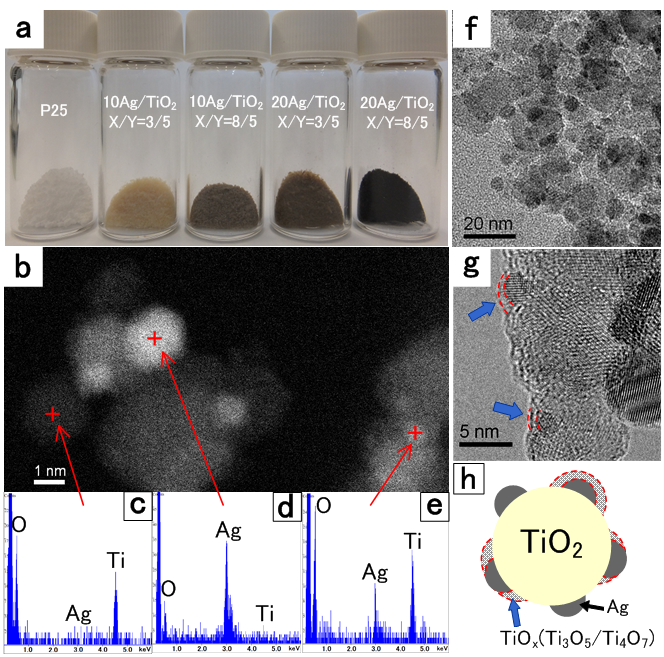Engineered silver TiOx/TiO2 nanoparticles
isible-light active materials are sought in photocatalysis and solar energy utilization. Here a material architecture active under visible-light and comprising of titanium suboxide (e.g. Ti4O7, Ti3O5) layers onto nanosilver on nanostructured TiO2 is formed by flame aerosol technology. Abundant combustion intermediates present during flame synthesis of these materials partially reduce TiO2 and induce strong metal-support interactions resulting in crystalline Ti-suboxides as determined by X-ray diffraction. The growth of such suboxides can be controlled through their flame spray synthesis conditions allowing for tuning the light absorption intensity in the visible spectrum. The as-prepared Ti-suboxides are stable upon annealing in air, at least, up to 350 oC for two hours. Their presence on the Ag/TiO2 particle surface and efficiency in generating photoinduced charge separation under visible light is demonstrated by electron paramagnetic resonance spectroscopy. Under visible light (λ > 400 nm), these nanoparticles exhibit strong photo-reduction of cationic species (Cr6+) and photo-oxidation of organics (methylene blue).
Recent, relevant references:
Fujiwara, K.; Deligiannakis, Y.; Skoutelis, C. G.; Pratsinis, S. E., "Visible-light active black TiO2-Ag/TiOx particles", Appl. Catal. B-Environ., 154–155, 9-15, (2014).

